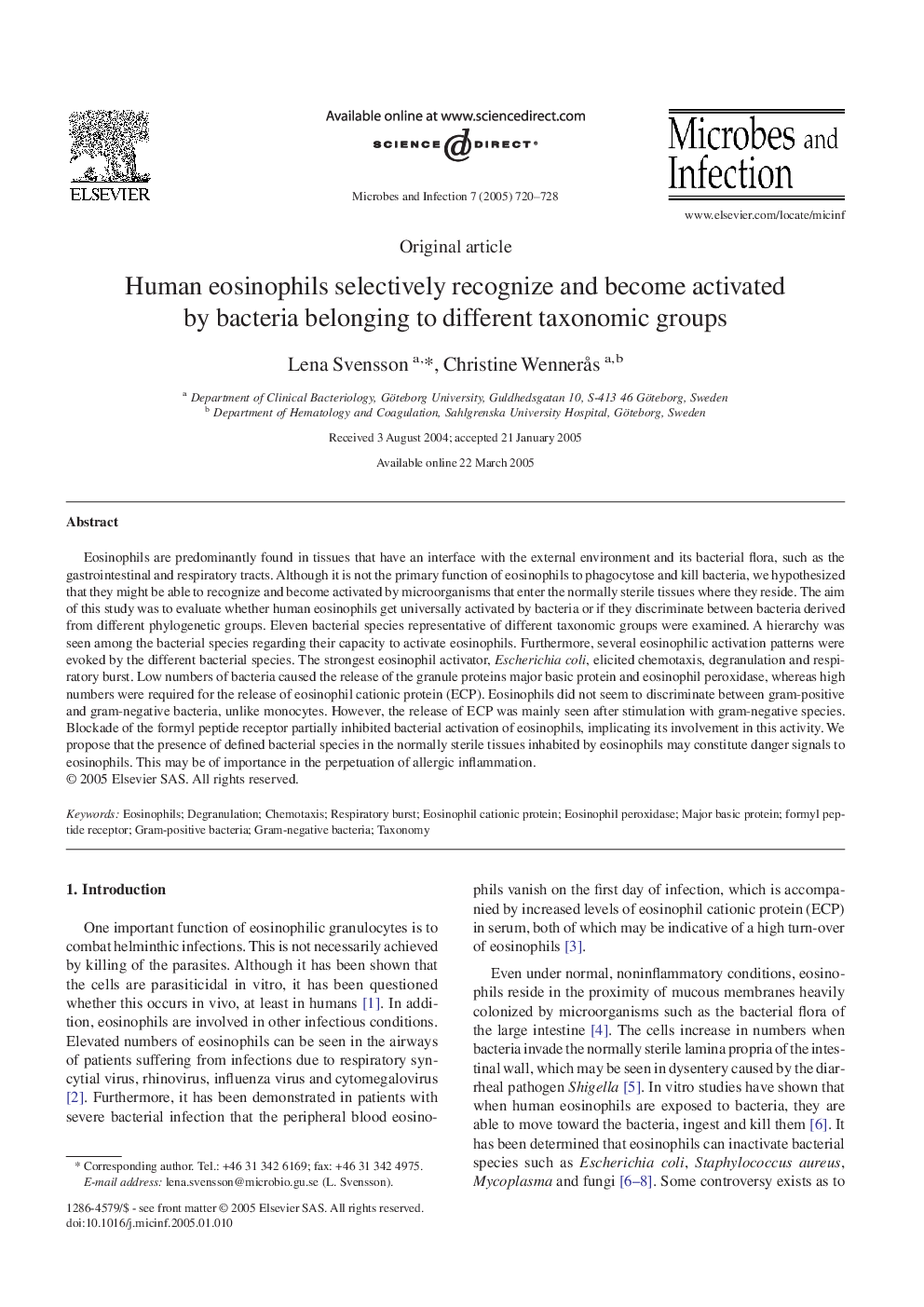| Article ID | Journal | Published Year | Pages | File Type |
|---|---|---|---|---|
| 9282950 | Microbes and Infection | 2005 | 9 Pages |
Abstract
Eosinophils are predominantly found in tissues that have an interface with the external environment and its bacterial flora, such as the gastrointestinal and respiratory tracts. Although it is not the primary function of eosinophils to phagocytose and kill bacteria, we hypothesized that they might be able to recognize and become activated by microorganisms that enter the normally sterile tissues where they reside. The aim of this study was to evaluate whether human eosinophils get universally activated by bacteria or if they discriminate between bacteria derived from different phylogenetic groups. Eleven bacterial species representative of different taxonomic groups were examined. A hierarchy was seen among the bacterial species regarding their capacity to activate eosinophils. Furthermore, several eosinophilic activation patterns were evoked by the different bacterial species. The strongest eosinophil activator, Escherichia coli, elicited chemotaxis, degranulation and respiratory burst. Low numbers of bacteria caused the release of the granule proteins major basic protein and eosinophil peroxidase, whereas high numbers were required for the release of eosinophil cationic protein (ECP). Eosinophils did not seem to discriminate between gram-positive and gram-negative bacteria, unlike monocytes. However, the release of ECP was mainly seen after stimulation with gram-negative species. Blockade of the formyl peptide receptor partially inhibited bacterial activation of eosinophils, implicating its involvement in this activity. We propose that the presence of defined bacterial species in the normally sterile tissues inhabited by eosinophils may constitute danger signals to eosinophils. This may be of importance in the perpetuation of allergic inflammation.
Keywords
Related Topics
Life Sciences
Immunology and Microbiology
Immunology
Authors
Lena Svensson, Christine Wennerås,
